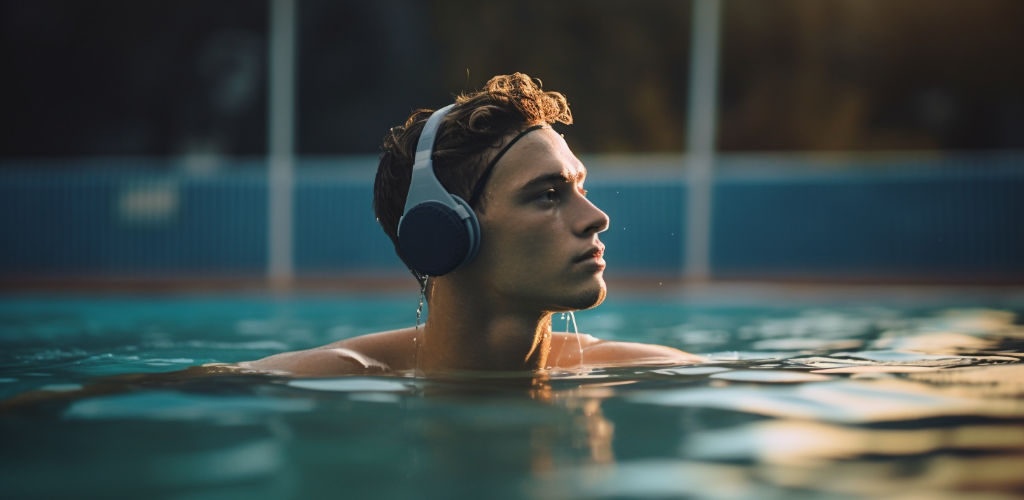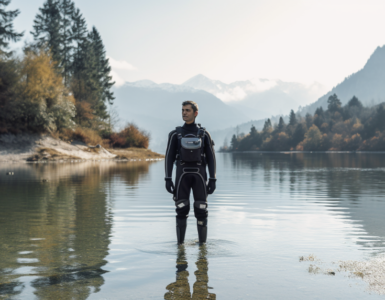Ever been swimming and ended up with that uncomfortable feeling of water trapped in your ears? It’s a common issue for swimmers and water sports enthusiasts. But why does this happen, and why does it matter? Water getting trapped in our ears is not only bothersome but can also lead to health problems if not properly addressed. Let’s dive into the details.
Why Does Water Get Stuck in Our Ears?
Our ears are fascinating and complex structures, designed to capture sound waves and protect our inner ear. However, their design and functionality can make them a prime spot for water to get trapped. The culprit is often the Eustachian tubes, which connect the middle ear to the back of the throat. These tubes help regulate ear pressure, but their positioning can also allow for the entrapment of water, especially during activities like swimming or diving.
Ever wondered why you feel the urge to ‘pop’ your ears when you’re ascending in an airplane or diving underwater? That’s your Eustachian tubes at work, trying to equalize the pressure in your middle ear.
The Dangers of Water in Ears
Having water trapped in your ears may seem like a minor annoyance, but did you know it can lead to serious health issues? When water remains in the ear canal for a prolonged period, it can cause infections, often referred to as swimmer’s ear. This can lead to symptoms like pain, redness, and swelling.
But it’s not just infections you need to worry about. Water in the ears can also affect your balance as your ears play a key role in maintaining equilibrium. In extreme cases, this could lead to conditions like tinnitus or even hearing loss. It’s clear that keeping water out of your ears when swimming isn’t just about avoiding discomfort—it’s crucial for your health and well-being.
Effective Methods to Keep Water Out of Ears
Ever wondered how you can enjoy your swimming or water sports activities without the constant worry of water entering your ears? Well, there are a variety of methods you can adopt to keep your ears dry. Let’s dive in and explore some of these effective solutions!
Use of Ear Plugs
One of the easiest and most effective ways to prevent water from entering your ears is by using ear plugs. But did you know that there are different types of ear plugs available in the market? Yes, you heard it right!
There are foam ear plugs, silicone ear plugs, and custom-molded ear plugs. Foam ear plugs are cheap and disposable, but they may not provide a perfect fit. Silicone ear plugs, on the other hand, are reusable and mold to the shape of your ear, providing a better seal. Custom-molded ear plugs are the most expensive, but they offer the best fit as they are made to match the exact contours of your ears.
Knowing the pros and cons of each type can help you choose the ear plugs that best suit your needs. But remember, the effectiveness of ear plugs largely depends on how well you use them. So, make sure you insert them properly!
Swim Caps
Have you ever considered using a swim cap to keep water out of your ears? It might sound surprising, but a swim cap can indeed help!
Swim caps, particularly those that come with ear pockets, can provide an extra layer of protection against water entry. They are made from materials such as silicone, latex, or lycra, each having its own set of advantages. Silicone caps are durable and hypoallergenic, latex caps are lighter and more breathable, and lycra caps are comfortable and long-lasting.
When selecting a swim cap, consider its material, design, and fit. Remember, a well-fitted swim cap not only keeps water out but also reduces drag in the water, improving your swimming speed.
Special Swimming Techniques to Minimize Water Entry
Did you know that the way you swim can influence how much water enters your ears? Let’s take a look at some swimming techniques that can help minimize water entry.
| Swimming Technique | Description | Effectiveness at Keeping Water Out |
|---|---|---|
| Freestyle Stroke | This technique involves keeping your head in line with your body and rotating it to breathe when one arm is out of the water. | High |
| Backstroke | In this technique, you swim on your back, which naturally keeps your ears out of the water. | Very High |
| Breaststroke | This involves keeping your head above water at all times, reducing the chance of water entering your ears. | Medium |
| Butterfly Stroke | This complex stroke may expose your ears to water more frequently, increasing the risk of water entry. | Low |
Mastering these techniques not only enhances your swimming experience but also plays a significant role in keeping your ears dry. Remember, it’s not just about swimming fast, it’s about swimming smart!
Home Remedies to Get Water Out of Ears
Ever found yourself with a stubborn case of water stuck in your ears after a swim? It’s a common issue that most of us have faced at one point or another. But did you know there are several simple home remedies that can help you get the water out? Let’s take a look at some of them.
- Tilting your head: One of the simplest methods is to tilt your head to the side, with the affected ear facing down. You can then gently tap the opposite side of your head to help the water drain out.
- Using a hot compress: Applying a warm compress to the affected ear can help evaporate the trapped water, providing relief.
- Yawning or chewing: These actions can help open up the Eustachian tubes, allowing the water to drain out.
- Use of a blow dryer: On the lowest setting, and at a safe distance, the warm air can help evaporate the trapped water.
Remember, these are home remedies and while they can be effective, they shouldn’t replace professional medical advice if you’re experiencing persistent discomfort or pain.
When to Seek Medical Help
Typically, water in your ears is nothing more than a minor annoyance. But what if it’s more than that? When should you seek medical help?
It’s important to understand that while the sensation of water in your ears can be uncomfortable, it may also be a sign of a more serious condition such as an ear infection. If you’re experiencing symptoms such as pain, discharge, hearing loss, or a feeling of fullness or pressure in your ear, it’s time to seek medical help.
A healthcare professional can assess your symptoms and provide the necessary treatment, which may include eardrops or a professional ear cleaning. In severe cases, a minor surgical procedure might be necessary to drain the fluid and relieve pressure.
Remember, it’s always better to be safe than sorry. If you’re in doubt, don’t hesitate to seek professional help. After all, your ears are essential for more than just hearing – they play a key role in balance and spatial orientation too!
Tips and Practices for Healthy Ears while Swimming
Keeping your ears healthy while swimming doesn’t have to be a chore. It’s all about incorporating a few simple steps into your routine. Ready to dive in?
- Use ear plugs: Remember the ear plugs we talked about earlier? They’re not just for decoration – they can actually help keep water out of your ears. Make it a habit to use them every time you swim.
- Don’t forget your swim cap: Even if you’re not a professional swimmer, a swim cap can provide an extra layer of protection for your ears.
- Keep your ears dry: After swimming, make sure to dry your ears thoroughly. You can use a towel or a hair dryer on a low setting.
- Try to avoid swimming in dirty water: This can increase the risk of ear infections.
- Regular check-ups: Did you know that regular check-ups can help prevent ear problems? Make sure to schedule regular appointments with your doctor.
Sign-off
So there you have it – a comprehensive guide to keeping your ears healthy while swimming. It’s not just about comfort, it’s about health too. The next time you take a dip, remember these tips and practices. Not only will you have a more enjoyable swim, but your ears will thank you too!
Keep swimming, stay healthy, and take care of your ears. After all, we only have two of them, right?




